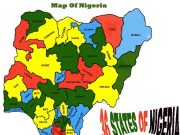The total amount of naira in circulation decreased to ₦5tn as of March 2025, marking a decline from ₦5.04tn recorded in February 2025.
This represents a further reduction from ₦5.24tn in January 2025, according to the latest money and credit statistics on the website of the Central Bank of Nigeria.
Naira in circulation is the total amount of physical currency circulating in the economy, representing money that is available for daily transactions, investments, and savings.
A decrease in currency in circulation can be part of efforts to reduce inflationary pressures and manage economic stability.
In addition to the naira in circulation, the CBN’s bank reserves have increased to ₦28.52bn in March 2025, up from ₦27.57bn in February 2025. In January 2025, the reserves stood at ₦27.43bn.
Meanwhile, the special intervention reserves remained unchanged at ₦284.36m during the three-month period.
Bank reserves refer to the funds held by the Central Bank and commercial banks to ensure liquidity and financial stability within the banking sector. The steady rise in bank reserves is an indication of the CBN’s efforts to maintain financial security and stability in the economy.
As of the same period last year, The PUNCH reported that the value of Nigeria’s currency in circulation had risen to ₦3.87tn by the end of March 2024.
This marked an increase from ₦3.69tn in February and ₦3.65tn in January. In addition, the currency outside of banks also saw a steady rise throughout the first quarter, growing from ₦3.28tn in January to ₦3.41tn in February, and reaching ₦3.63tn in March.
Also, Nigeria’s money supply recorded its first decline in 2025, falling to ₦110.32tn in February from ₦110.94tn in January, data from the Central Bank of Nigeria showed.
The 0.56 per cent month-on-month drop comes amid continued efforts by the apex bank to manage liquidity in the system, following earlier signals of monetary tightening and foreign exchange adjustments.
Credit: punchng.com






































































